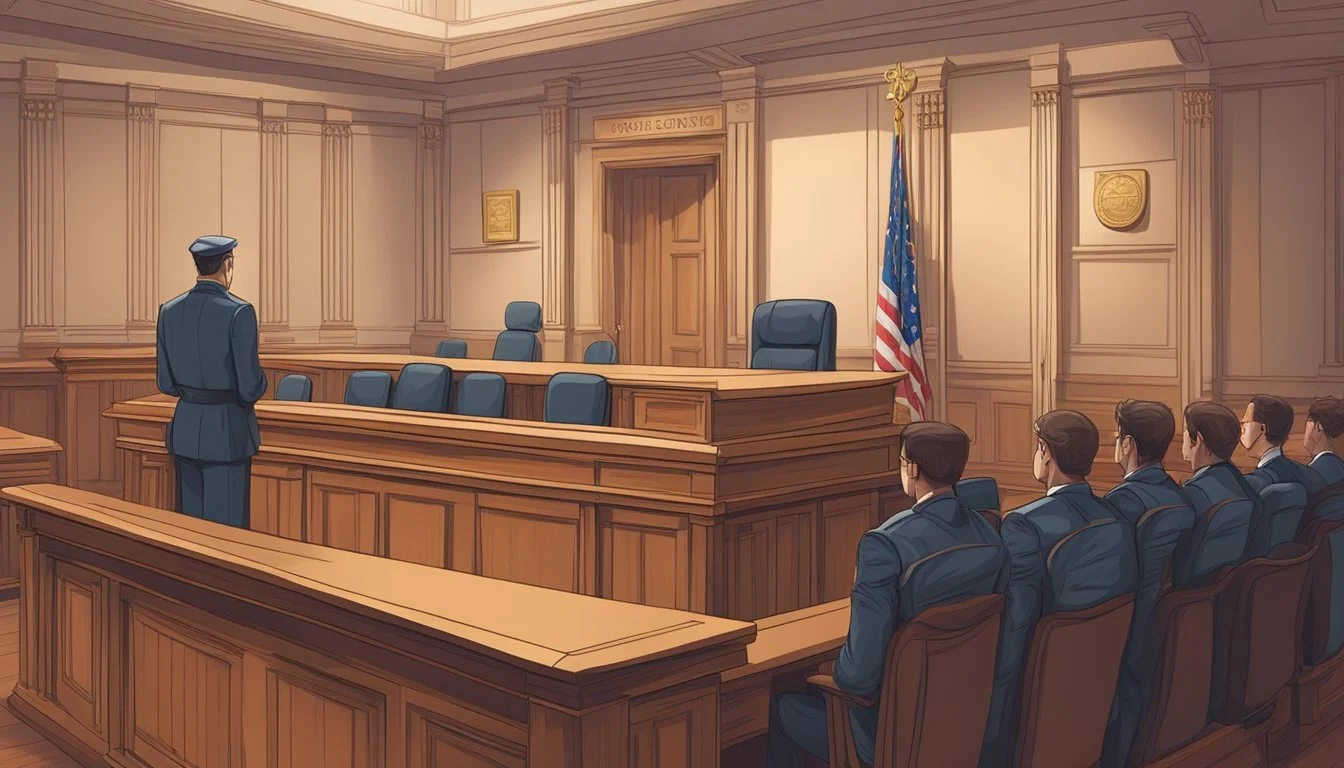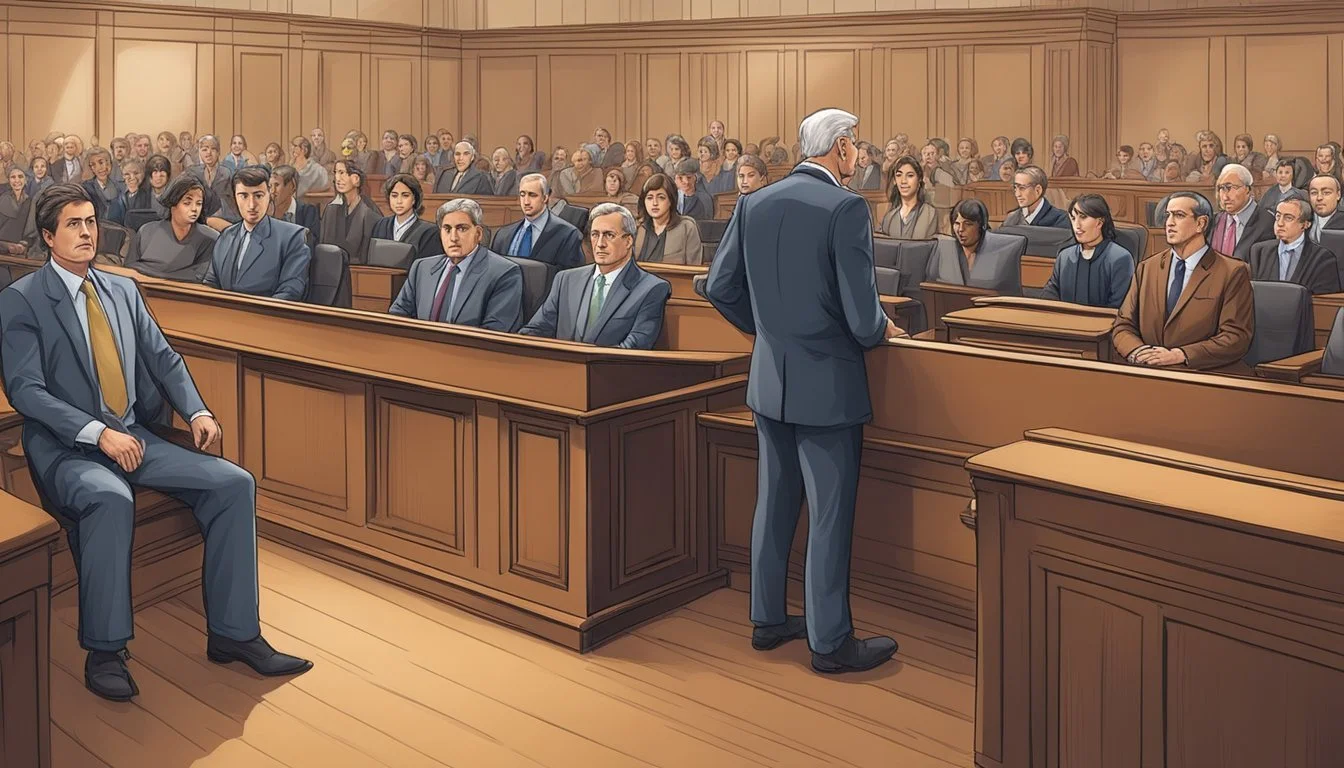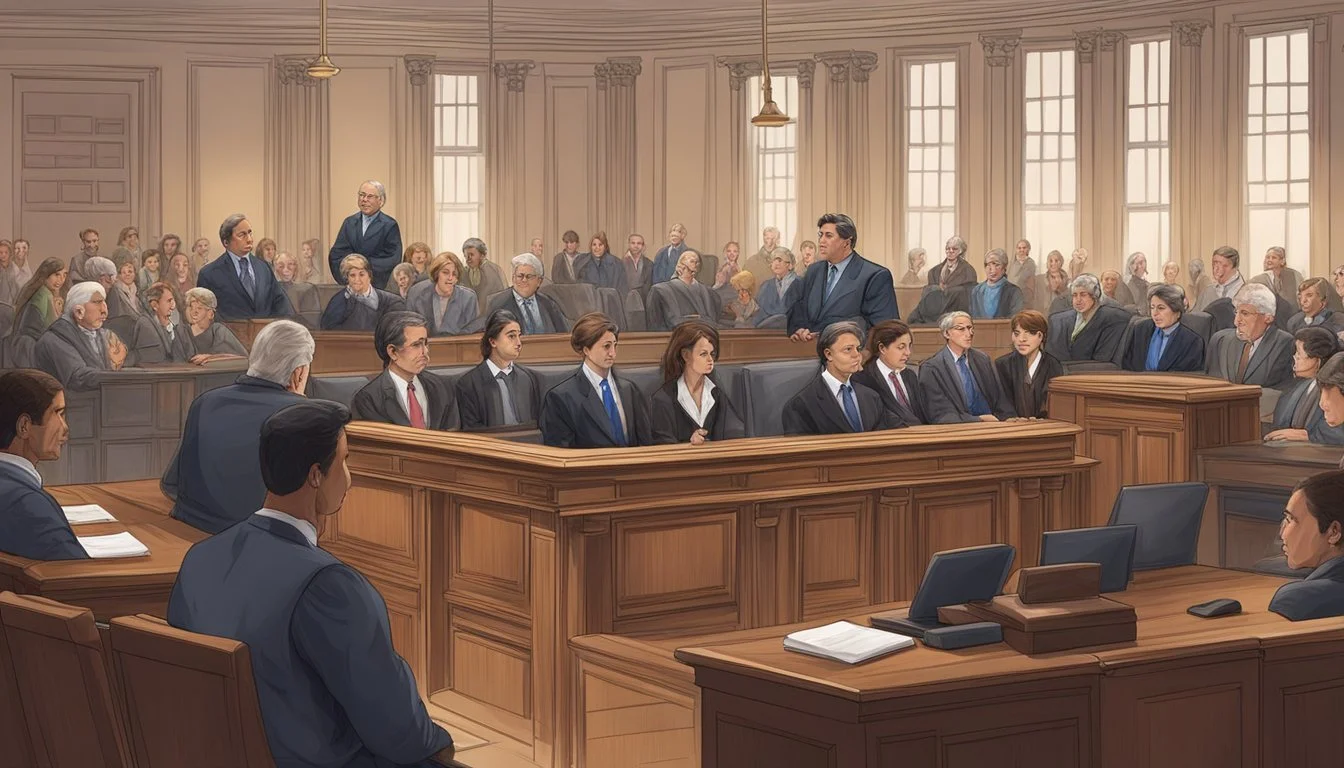Jury Selection Challenges in High-Profile Cases Like the Menendez Trial
Navigating Media Influence and Bias
High-profile criminal cases like the Menendez trial present unique challenges in jury selection. The sensational nature of these cases often leads to widespread media coverage, potentially influencing public opinion and making it difficult to find impartial jurors. Selecting an unbiased jury becomes crucial to ensure a fair trial, as jurors must base their decisions solely on evidence presented in court rather than preconceived notions or external information.
The Menendez brothers' case, involving the murder of their wealthy parents in Beverly Hills, exemplifies these difficulties. Extensive publicity surrounding the crime and subsequent legal proceedings created a significant hurdle in finding jurors who had not already formed opinions about the defendants' guilt or innocence. This situation is not unique to the Menendez trial but is common in many high-profile cases that capture national attention.
Courts employ various strategies to address these challenges, including thorough questioning of potential jurors, known as voir dire, to uncover biases. Some jurisdictions even utilize scientific methods to help identify prejudices that may not be immediately apparent. These efforts aim to construct a jury panel capable of rendering a fair and impartial verdict based solely on the evidence presented during the trial.
Overview of Jury Selection in Criminal Trials
Jury selection is a critical phase in criminal trials, designed to ensure a fair and impartial panel of jurors. The process involves multiple steps and legal considerations aimed at safeguarding the defendant's right to a fair trial while maintaining public confidence in the justice system.
The Importance of an Impartial Jury
An impartial jury is fundamental to the criminal justice system. It helps prevent bias and ensures that verdicts are based solely on evidence presented in court.
Jurors must be free from preconceived notions about the case or the defendant. This impartiality is crucial for upholding the principle of innocent until proven guilty.
The selection of an unbiased jury is particularly challenging in high-profile cases, where media coverage can influence public opinion.
Phases of Jury Selection Process
The jury selection process typically begins with summoning a pool of prospective jurors from voter registration lists or driver's license records.
Initial screening eliminates individuals who do not meet basic eligibility criteria, such as age, citizenship, or residency requirements.
Questionnaires may be used to gather information about potential jurors' backgrounds and beliefs. This helps attorneys identify potential biases or conflicts of interest.
The final phase involves in-person questioning of prospective jurors, known as voir dire.
Role of Voir Dire in Jury Selection
Voir dire allows attorneys and judges to question potential jurors directly. This process aims to uncover any biases or prejudices that might affect a juror's ability to be impartial.
Attorneys can challenge jurors "for cause" if they demonstrate clear bias or inability to serve. These challenges are unlimited but must be approved by the judge.
Peremptory challenges allow attorneys to dismiss a certain number of jurors without stating a reason. However, these cannot be used to discriminate based on race, gender, or ethnicity.
The voir dire process helps shape the final jury composition, balancing the interests of both prosecution and defense to create a fair and impartial panel.
High-Profile Cases and Pre-Trial Publicity
High-profile cases attract intense media scrutiny, posing unique challenges to the jury selection process and trial fairness. Pre-trial publicity can significantly impact public perceptions and potential jurors' views.
The Impact of Media Coverage on Juror Perceptions
Media coverage of high-profile cases can shape public opinion long before a trial begins. News reports, social media discussions, and television coverage often present information that may not be admissible in court.
This exposure can create preconceived notions about a defendant's guilt or innocence. Potential jurors may form biases based on media narratives rather than courtroom evidence.
Sensationalized reporting can also distort facts or emphasize certain aspects of a case. This selective focus may lead to misconceptions about the legal proceedings or the individuals involved.
Challenges in Maintaining Juror Impartiality in High-Profile Cases
Ensuring juror impartiality becomes increasingly difficult as media coverage intensifies. Courts face the task of finding jurors who can set aside pre-existing knowledge and opinions.
Voir dire, the jury selection process, becomes crucial in identifying biased individuals. Attorneys and judges must carefully question potential jurors about their media exposure and ability to remain impartial.
In some cases, courts may consider change of venue to mitigate the effects of local publicity. Sequestration of jurors is another tactic used to limit exposure to ongoing media coverage during the trial.
Judges often issue strict instructions to selected jurors, prohibiting them from consuming media related to the case. This helps preserve the integrity of the trial process and ensures decisions are based solely on courtroom evidence.
Strategies in Defending High-Profile Criminal Cases
Defending high-profile criminal cases requires a multifaceted approach, with jury selection and expert consultation playing crucial roles. These strategies aim to secure a fair trial and mitigate the impacts of media attention and public opinion.
The Defense Team's Approach to Jury Selection
Defense attorneys in high-profile cases employ meticulous tactics during jury selection. They utilize peremptory challenges to remove potentially biased jurors. Lawyers scrutinize potential jurors' backgrounds, social media presence, and responses to questionnaires.
The defense team focuses on identifying jurors who can remain impartial despite media exposure. They look for individuals capable of separating facts from sensationalized reports. Attorneys may seek jurors with analytical skills and a willingness to question authority.
During voir dire, defense lawyers ask probing questions to uncover hidden biases. They pay close attention to non-verbal cues and body language. The goal is to create a jury pool that will fairly evaluate the evidence presented in court.
Utilization of Jury Consultants in Strategy Development
Jury consultants play a vital role in high-profile criminal defense strategies. These experts use scientific methods to analyze potential jurors and develop selection criteria. They conduct mock trials and focus groups to gauge public perception of the case.
Consultants help create detailed juror profiles based on demographic data and psychographic information. They assist in crafting targeted questions for voir dire that reveal jurors' attitudes and beliefs. Their insights guide attorneys in making informed decisions during jury selection.
Jury consultants also advise on courtroom presentation strategies. They help tailor arguments and evidence presentation to resonate with the selected jury. Their expertise extends to witness preparation and crafting opening and closing statements that effectively communicate the defense's narrative.
Prosecution Tactics in Jury Selection
Prosecutors employ strategic approaches to jury selection in high-profile cases. They aim to secure jurors who can objectively evaluate evidence while considering the case's public nature.
The Prosecution's Considerations for Juror Eligibility
Assistant district attorneys scrutinize potential jurors' backgrounds and attitudes. They seek individuals who can remain impartial despite media exposure. Prosecutors often look for jurors with:
• Strong critical thinking skills • Ability to set aside preconceived notions • Respect for law enforcement
Questionnaires help identify biases or conflicts of interest. Prosecutors may favor jurors with relevant professional experience or education. They also consider demographic factors that might influence verdict decisions.
Ethical Considerations for the Prosecution during Voir Dire
Prosecutors must adhere to strict ethical guidelines during jury selection. They are obligated to:
• Ask fair, non-discriminatory questions • Disclose known biases or conflicts • Avoid manipulating jurors' responses
Transparency is crucial. Prosecutors cannot withhold information that might affect a juror's ability to serve. They must balance their duty to the state with the defendant's right to a fair trial.
Ethical prosecutors avoid using peremptory challenges based on race, gender, or other protected characteristics. They focus on legitimate concerns about juror impartiality and competence.
The Influence of Social Media and Online Activity on Jury Selection
Social media and internet usage present significant challenges for jury selection in high-profile cases. Potential jurors' online activities can reveal biases and expose them to case-related information, complicating the process of seating an impartial jury.
Screening for Social Media Influence Among Potential Jurors
Courts now routinely inquire about social media use during voir dire. Attorneys may request access to candidates' profiles to identify potential biases. Some jurisdictions have implemented social media background checks on prospective jurors.
Questionnaires often ask about exposure to case information online. Candidates who have posted about the case or followed related accounts may be dismissed. Courts aim to select jurors who can set aside preconceived notions formed through social media.
Confirmation bias is a key concern, as jurors may seek out information that aligns with their existing views. Screening seeks to identify those most likely to rely solely on courtroom evidence.
Juror Misconduct Related to Internet Use
Despite instructions, some jurors continue to access case-related information online during trials. This misconduct can lead to mistrials or overturned verdicts.
Common issues include:
Researching legal terms or case details
Communicating about the trial on social media
Connecting with parties involved via LinkedIn or Facebook
Courts have implemented strict policies, including confiscating devices during proceedings. Some require jurors to sign pledges agreeing to avoid online research or discussion.
Penalties for violations can include fines or contempt of court charges. Judges often give daily reminders about internet restrictions to reinforce their importance.
Legal Challenges and Supreme Court Rulings on Jury Selection
The process of jury selection has faced numerous legal challenges over the years. Supreme Court rulings have significantly shaped the practices and standards used to ensure fair and impartial juries, particularly in high-profile cases.
Peremptory Strikes and the Constitutional Right to a Fair Jury
Peremptory strikes allow attorneys to dismiss potential jurors without stating a reason. However, this practice has come under scrutiny due to concerns about discrimination. The Supreme Court addressed this issue in Batson v. Kentucky (1986), ruling that peremptory challenges cannot be used to exclude jurors based on race.
This landmark decision established a three-step process for evaluating claims of racial discrimination in jury selection:
The defendant must show a pattern of strikes against jurors of a particular race
The prosecutor must provide race-neutral reasons for the strikes
The judge must determine if the explanations are credible or pretextual
Since Batson, courts have extended this protection to other protected classes, including gender and ethnicity.
Key Supreme Court Cases Affecting Jury Selection
Several Supreme Court cases have shaped modern jury selection practices:
Irvin v. Dowd (1961): Established that the Sixth Amendment right to an impartial jury applies to state courts
Witherspoon v. Illinois (1968): Limited the exclusion of jurors opposed to the death penalty
Batson v. Kentucky (1986): Prohibited race-based peremptory challenges
J.E.B. v. Alabama (1994): Extended Batson to prohibit gender-based strikes
These rulings aim to ensure diverse, representative juries and protect the constitutional right to a fair trial. Courts continue to grapple with balancing the use of peremptory challenges against the need to prevent discrimination in jury selection.
Jury Selection in Retrials and Mistrials
Jury selection in retrials and mistrials presents unique challenges for the legal system. The process requires special considerations to ensure fairness and impartiality given the prior proceedings.
Unique Considerations When Selecting a Jury for a Retrial
Selecting a jury for a retrial involves addressing potential bias from previous media coverage. The jury pool may have been exposed to details from the first trial, requiring careful screening. Attorneys often ask targeted questions about prior knowledge of the case.
Voir dire becomes more intensive in retrials. Lawyers probe deeper into jurors' opinions formed from earlier publicity. They may inquire about discussions with others regarding the previous trial's outcome.
Courts sometimes change the venue for retrials to find impartial jurors. This helps mitigate the effects of local media saturation. Expanded jury pools from different jurisdictions can provide a fresh perspective.
Mistrial Declarations and Their Impact on Jury Selection
When a mistrial is declared, it significantly affects subsequent jury selection. The reasons for the mistrial often shape the approach to choosing new jurors.
If juror misconduct caused the mistrial, stricter vetting procedures are typically implemented. Courts may increase oversight of juror social media activity and personal connections.
Mistrials due to hung juries lead to scrutiny of juror decision-making processes. Attorneys focus on identifying jurors who can reach a verdict based solely on evidence presented in court.
The time between a mistrial and retrial can influence jury selection. Extended periods may reduce public memory of the case, potentially easing the selection process.
Effective Communication during Trial
Effective communication plays a crucial role in ensuring a fair trial, especially in high-profile cases. Clear and concise delivery of information helps jurors understand complex legal concepts and evaluate evidence objectively.
Delivering Opening Statements to an Informed Jury
Opening statements set the tone for the trial and provide jurors with a roadmap of the case. Attorneys must craft their statements carefully, considering that jurors may already have preconceived notions from media coverage. Presenting a clear narrative and addressing potential biases head-on can help establish credibility.
Lawyers should use visual aids and concise language to capture the jury's attention. Highlighting key evidence and explaining its significance helps jurors focus on relevant facts. Attorneys must also be mindful of their body language and tone, as these non-verbal cues can impact jurors' perceptions.
The Role of Jury Instructions for Clarifying Legal Concepts
Jury instructions serve as a critical tool for ensuring jurors understand their responsibilities and the applicable laws. Judges must deliver these instructions clearly and effectively to promote a fair trial.
Using plain language and avoiding legal jargon helps jurors grasp complex concepts. Providing written copies of instructions allows jurors to reference them during deliberations. Some courts have adopted multimedia presentations to enhance understanding.
Judges should emphasize the importance of impartiality and basing decisions solely on evidence presented in court. Clear instructions on how to evaluate witness credibility and handle conflicting testimony are essential for guiding jurors through their decision-making process.
Case Study: The Menendez Trial
The Menendez trial highlighted significant challenges in jury selection for high-profile cases and demonstrated the impact of media coverage on trial outcomes.
Examination of Jury Selection Challenges in the Menendez Brothers' Retrials
Selecting an impartial jury proved difficult in the Menendez brothers' retrials. The case's notoriety complicated the process. Extensive media coverage had exposed potential jurors to details and opinions about the case.
Prosecutors and defense attorneys faced the task of identifying jurors who could set aside preconceived notions. They scrutinized jurors' exposure to news reports and their ability to remain unbiased.
The court implemented rigorous screening procedures. Potential jurors underwent lengthy questionnaires and individual interviews. These measures aimed to uncover any hidden biases or prior knowledge that could influence their judgment.
Analysis of Media Influence on the Menendez Trial Outcomes
Media coverage significantly impacted the Menendez trial outcomes. News outlets provided extensive reporting on the case, shaping public opinion.
The defense team argued that pre-trial publicity made it challenging to secure a fair trial. They claimed that media portrayals of the brothers influenced potential jurors.
Sensational headlines and in-depth analyses of the brothers' motives saturated news cycles. This constant exposure potentially affected jury pools in both initial trials and retrials.
The prosecution contended with the media's focus on the brothers' abuse claims. This narrative gained traction, potentially swaying public sympathy and juror perceptions.
Courts implemented measures to mitigate media influence, including jury sequestration and strict rules on juror media consumption during the trial.




